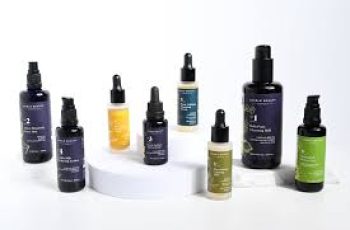
The Ultimate Guide to Massage Oils: Dermatologist-Approved Advice for Every Skin Type
Massage oils are an often-overlooked component of skin care—but they shouldn’t be.
Whether you’re a massage therapist searching for the perfect oil to use with clients, or you’re looking to elevate your at-home massage routine, selecting the right massage oil can significantly improve your experience and your skin’s health.
Many massage oils on the market don’t spread well, clog pores, stain linens, or cause breakouts and allergic reactions.
That’s why understanding the ingredients in your massage oil—and how they interact with your skin type—is crucial.
As a dermatologist, I’ve advised countless patients on which massage oils are ideal for their specific skin types and concerns.
This guide categorizes carrier oils and essential oils, explains the science behind their benefits, and helps you create customized massage oil blends suited for pregnancy, pain relief, acne-prone skin, and more.
🧴 What Are Massage Oils?
Massage oils serve two major functions:
Improve the glide of hands or tools across the skin, preventing friction and irritation.
Deliver active ingredients like fatty acids, vitamins, antioxidants, or calming botanicals that nourish the skin.
There are two main categories:
Carrier Oils (base oils that provide most of the hydration and glide)
Essential Oils (highly concentrated botanical extracts added for aroma or therapeutic effect)
Let’s begin with a deep dive into the most commonly used carrier oils.
🪔 Carrier Oils: The Base of Every Great Massage Oil
Carrier oils are lipid-rich oils derived from nuts, seeds, or plants. They contain fatty acids that hydrate and protect the skin barrier.
Below is a dermatologist-curated list of the most common carrier oils, with insights on comedogenicity, texture, and ideal use cases.
1. Argan Oil
🌿 Best for: Most skin types, especially dry or aging skin
Argan oil is lightweight, non-comedogenic, and packed with oleic and linoleic acids. It absorbs quickly, spreads easily, and delivers antioxidants like vitamin E.
As a dermatologist, I consider it a gold-standard oil for massages—especially when combined with thinner oils like sweet almond.
🔎 Derm Tip: Try the PAORR Moroccan Argan Oil for a pure, organic version.
2. Avocado Oil
🥑 Best for: Dry, inflamed, or aging skin
Thick and nourishing, avocado oil is rich in carotenoids and skin-repairing vitamins. It absorbs quickly and leaves skin feeling soft and soothed.
It’s a bit heavy for long massages, but it blends well with lighter oils.
3. Sweet Almond Oil
🌰 Best for: Most skin types, especially normal to dry skin
Non-comedogenic and rich in fatty acids, almond oil has the perfect texture and glide for most massage types. It’s soothing, hypoallergenic for many, and has light natural SPF properties.
📌 Pregnancy Benefit: Studies show sweet almond oil may reduce stretch marks and skin itching during pregnancy.
4. Grapeseed Oil
🍇 Best for: Acne-prone or sensitive skin
Lightweight, silky, and fast-absorbing, grapeseed oil is high in linoleic acid and antioxidants like resveratrol. It offers a satiny feel and won’t stain linens.
An excellent choice for Swedish or lymphatic massages.
5. Jojoba Oil
🌾 Best for: Oily or acne-prone skin
Technically a wax ester, jojoba mimics skin’s natural sebum. It glides well, rarely causes breakouts, and is an excellent base for essential oils.
Jojoba also helps regulate oil production, making it great for facial massage.
6. Coconut Oil
🥥 Best for: Very dry skin (not acne-prone)
This thick, solid-at-room-temperature oil melts into the skin and offers deep moisture. However, it’s highly comedogenic and can stain linens. Use with caution, especially on the back, chest, or face.
7. Rosehip Oil
🌹 Best for: Sun-damaged or aging skin
Lightweight and packed with vitamin C and lycopene, rosehip oil helps improve skin tone and reduce hyperpigmentation. It’s a beautiful addition to facial or aromatherapy massage blends.
8. Borage Seed Oil
🌼 Best for: Eczema or inflamed skin
Rich in gamma-linolenic acid (GLA), this oil is deeply anti-inflammatory and ideal for healing massages on irritated or damaged skin.
9. Marula Oil
🌰 Best for: Dry or mature skin (not acne-prone)
With a luxurious texture and rich in vitamin C and oleic acid, marula deeply nourishes—but can clog pores due to its palmitic acid content.
10. Flaxseed Oil
🌱 Best for: Nourishing skin (not acne-prone)
This thick, creamy oil is soothing and rich in omega-3s. While it’s not ideal for breakout-prone skin, it offers deep nourishment and a pleasant slip when blended with lighter oils.
11. Olive Oil
🫒 Best for: Rough or calloused areas (not facial use)
Although highly moisturizing, olive oil is too thick and comedogenic for most massage uses. It’s better for spot-treating dry elbows, knees, or feet.
12. Mineral Oil
💧 Best for: Inexpensive barrier protection
While mineral oil offers great glide and is non-comedogenic, it doesn’t nourish the skin. It leaves a heavy residue and lacks antioxidants or anti-inflammatory properties.
13. Sunflower & Safflower Oil
🌻 Best for: Quick-absorbing blends
These oils are rich in linoleic acid but absorb too quickly on their own. Ideal as secondary oils in blends to prevent clogged pores and enhance antioxidant delivery.
🌸 Essential Oils for Fragrance & Mood
Essential oils should never be used undiluted. They’re primarily used for aromatherapy and sensory effects, not hydration. Always perform a patch test and consult with clients for allergy concerns.
Top 4 Essential Oils for Massage:
Lavender Oil: Calming, reduces anxiety, improves pain tolerance during procedures. Shown in my own 2011 study to reduce stress during Botox injections.
Bergamot Oil: Uplifting citrus aroma; antioxidant-rich but phototoxic—wash off before sun exposure.
Eucalyptus Oil: Clears sinuses and relieves sore muscles, but highly allergenic—use with extreme caution.
Rose Oil: Romantic and emotionally soothing, though often irritating to sensitive skin.
🧪 Massage Oil Blends: Customizing for Skin Concerns
There’s no one-size-fits-all massage oil. Custom blends can combine the strengths of several ingredients. For example:
For dry, aging skin: Argan + Rosehip + Sweet Almond
For acne-prone skin: Jojoba + Grapeseed + Lavender
For pregnancy: Sweet Almond + Evening Primrose (safe and supported by evidence)
For sports massage: Sesame Oil + Arnica + Menthol
For pain relief: Sesame + Capsaicin (in low concentrations) + Eucalyptus
🤰 Massage Oils for Pregnancy
Sweet almond oil stands out for its evidence-based effectiveness in reducing stretch marks and itchiness during pregnancy. It’s also considered safe for use in both pregnant and breastfeeding women.
💪 Massage Oils for Pain Relief
Massage oils for sports or trauma recovery often include:
Sesame oil – Proven in studies to reduce trauma pain when used with massage.
Arnica – Anti-inflammatory and great for sore muscles.
Menthol – Cools and distracts from pain.
Capsaicin – Reduces nerve sensitivity (use sparingly; may cause burning).
⚠️ Massage Oils to Avoid for Sensitive Skin
Some oils are more likely to cause irritation or allergic reactions:
Avoid if you have sensitive skin:
Citrus oils (lemon, grapefruit, bergamot)
Cinnamon, peppermint, or cassia oils
Complex floral oils (ylang ylang, lavender)
Nut oils (almond, walnut) for those with tree nut allergies
Pine, fir, and eucalyptus (contain allergens like limonene)
🧬 Don’t Guess—Know Your Skin Type
Terms like sensitive, acne-prone, or dry are just the tip of the iceberg. If you want to choose the right oils with confidence, I highly recommend taking our free dermatologist-verified skin type quiz.
You’ll receive a personalized skincare regimen tailored to your skin’s true type.
🧘 Summary
Massage oils can enhance more than relaxation—they can support skin health, reduce inflammation, improve hydration, and even relieve pain.
But only if you use the right oil for your skin and purpose.
Whether you’re performing massage for relaxation, pain relief, pregnancy support, or skincare, a thoughtful blend of carrier and essential oils can make all the difference.
With dermatologist-approved guidance, you can avoid acne breakouts, allergic reactions, and sticky massages—and choose the oil that truly works for you.
🧴 Take the Free Skin Type Quiz
Find out which oils and products are best for your skin with our quick quiz. You’ll get a personalized skin care regimen designed by dermatologists.


